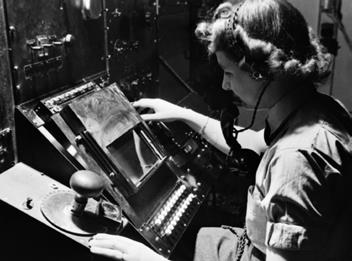THE PILOTS, THE GROUND CREW AND THE OPERATORS – WHO WERE THE FEW?

There were approximately 3,000 pilots who took part in the Battle of Britain as part of the RAF. However, there were thousands more working as mechanics, fitters, engineers or on home defences, such as anti-aircraft guns and barrage balloons (barrage balloons are very large balloons attached to metal cables that were used to distract and confuse pilots and could bring aircraft down if flown into). There were also the staff who worked at the Operations Rooms and on radar stations, along with their support staff.
In addition to the pilots fighting the Germans in the air, there were other pilots whose job it was to transport the aircraft from the factories to the bases and around bases. These pilots were the ATA – Air Transport Auxiliary. Approximately one in eight ATA pilots was a woman. Although these pilots didn’t fight, they still risked their lives with the sometimes-temperamental aircraft, and were targeted by German fighters.
Lord Balfour, Under Secretary of State of Air, commented that ‘the Air Transport Auxiliary were civilians in uniforms who played a soldier’s part in the Battle for Britain’.
Women, as part of the WRAF, also carried out the majority of roles in the Operations Rooms and in radar stations. They served the Observer Corps as spotters, as well as carrying out support roles with the ground crew. Women were not allowed in combat (fighting roles); however, there were women as part of the crew for anti-aircraft guns.
The pilots came from many different walks of life. Flying had been an expensive hobby before the war, so only those who were well-off tended to be pilots, but this was not always the case. Those who worked on aircraft as mechanics and fitters often learnt how to fly as well. Once the war started, the RAF was interested in recruiting anyone who showed an ability to fly, especially under pressure. This meant that there was a real mixture of people that became pilots.
Some Battle of Britain Statistics
- There were 2,000 Luftwaffe aircraft.
- There were 640RAF aircraft at Fighter Command, and this was supported further by Bomber Command and Coastal Command.
- Approximately 3,000 pilots served in Fighter Command and the average age was 20 (although some were 18 and others were over 30).
- The RAF lost 1,023 aircraft during the Battle of Britain and the Luftwaffe lost 1,887.
- Of the 3,000 aircrew who fought in the Battle of Britain, 544 lost their lives, and of the remainder, a further 814 died before the end of the War.
- The most famous fighter aircraft used in the Battle of Britain were the British Hawker Hurricane and Supermarine Spitfire Mk I and the German Messerschmitt Bf 109, although other aircraft were also involved.
- There were 35 Hurricane squadrons, compared to 19 Spitfire.While the Spitfire was newer, slightly smaller and faster, the Hurricane was reliable and much easier to repair.
Outcome of the Battle of Britain
The RAF was outnumbered about five to one by the Germans. The cost of the Battle was high for pilots and aircraft. In the end, the British won the Battle of Britain due to the advance warning that radar gave them, working with the Dowding system. It can also be suggested that, for many of those flying, the need to stop an invasion was more important than that for attacking, and they were prepared to risk more than the things that motivated the Luftwaffe.
By defeating the Luftwaffe, the RAF had stopped an invasion, and they had also prevented the resources of Britain and its Empire and Commonwealth from falling under Nazi control.
Ultimately, the success of the Battle of Britain meant that the Nazis could be defeated, and this was an important message to the people of Europe and the rest of the world